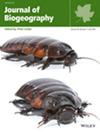Large-scale space use and geographical ranges of animal populations are central topics in ecology. Whereas they are traditionally often based on citizen science or professional sightings of (marked) animals, recent technological developments have presented GPS tracking as an alternative method for inferring space use at the population level. Tracking devices are however much more expensive than traditional marks, rings or collars, leading to datasets that typically consist of much fewer individuals. We study how GPS tracking data and citizen science resighting data of marked individuals compare as alternative sources for inferring range size.
Northwestern Europe.
Bewick's swan (Cygnus columbianus bewickii).
We calculated Bewick's swan range sizes from a wealth of GPS tracking and resighting data during winter, the period of the year when both data types are abundant. We examined the effect of the number of individuals and the total number of spatial records (either resightings or GPS fixes) on the inferred range size. Moreover, we combined GPS tracks with resightings of the same individuals to empirically determine spatial variation in resighting rates.
Tracked individuals generated records across an area 1.5–2 times larger than individuals that were merely resighted. Moreover, any given number of daily GPS records (rather than GPS-tracked individuals) yielded an area 1.5 times larger than that same number of resighting records. A small number of GPS-tracked individuals (~20) was sufficient to yield a larger range size compared to much higher numbers of resighted individuals (well over 400). Spatial variation in resighting rates corresponded well with the differences in range size from the two data types, indicating that spatial gaps in observer effort can hamper range estimations.
When combined with resighting data, tracking data can be used to indicate areas of low observer effort. Although citizen science resightings are essential for collecting various types of biological information, we show that GPS tracking presents a highly efficient alternative to traditional marking for assessing large-scale space use and population ranges, requiring far fewer individuals to be used.


